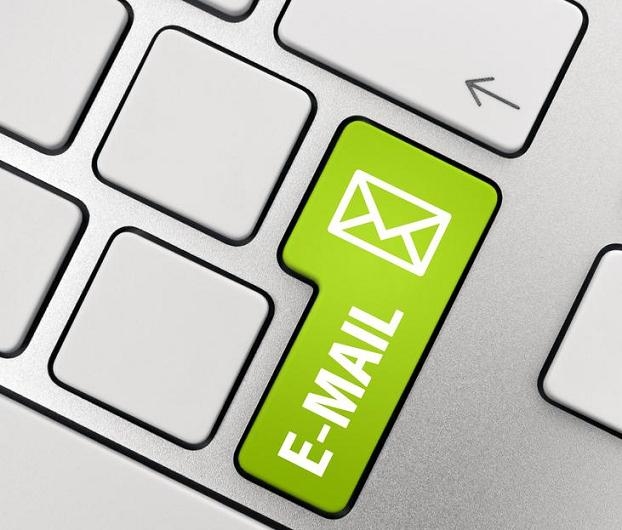The success of your email campaign largely falls on the subject line—a chance to make your first impression to the reader. For subscribers to open, read, and click through your email, you’ll need something that quickly grabs their attention. On average, I receive about 100 emails in a day, but I end up reading only 7 emails out of the 100 emails in my inbox. So what happens to the rest?
Having a powerful subject line may not be the perfect hook, but it’s without question the first step toward reducing opt-outs and increasing open rates. Find out what email marketing experts rate highly for your subject lines.

1. Keep it Short and specific
A short subject line attracts more open rates than a longer subject line. Keep your subject line shorter than a tweet, preferably 5 to 8 words. If you expect people to read your email on mobile devices, trim your subject line to 30 characters or even fewer. Though short, its message should be obvious to the reader. Don’t keep the reader guessing—be specific. Your formatting should be very simple (Free Pizza Today—You’re Invited), and as they say, looks matter.
2. Keep it Clever, But Clear
Email marketing, like any other form of marketing, is largely about being noticed, crafting something catchy, and being memorable. This should not however, be fronted at the expense of clarity. Your readers care more about real benefits than just entertainment. What you need to remember is that readers will be looking to your subject line for a reason to read on, and if it’s all sweet, but bare on value, then they’ll not even care to open your email.
A subject line like “Finally, it’s Here,” may look sweet and attention-grabbing, but it’s too “clever” for your reader. Its message is not obvious to the reader, and the reader may not see the need to open it.
3. Put emphasis on the Benefits
Your readers have needs, concerns, and questions that they want addressed. Use your subject line to provide valuable information upfront; readers will click on your email if it has something that alleviates their pain points. This is very effective especially if you are sending an email to someone you know very little about. You may want to mention some discount or service in your subject line. To arouse even more action from the reader, you can challenge their beliefs with a contradictory promise like “Have your chocolate and still lose calories.” Focus on telling your reader what they don’t know already. Naturally, people are more drawn toward controversy than the norm, and if you adequately understand your reader, you can play around with their imagination to promise something unique.
4. Keep your Subject Line Personal
Readers want you to be personal in your address, but tread carefully not to come out as being too personal. Your reader’s name may be their most favorite word, but you don’t have to include their name in the subject line. Using pronouns like “you” and “your” (7 Ways to Grow Your Wealth This Summer) brings you out as someone who understands their interests.
5. Minimize use of caps
Going ALL CAPS with your subject line comes out as yelling to the reader, and may land your email in a spam filter. Only use caps to highlight occasional words, and only when it’s necessary. To separate your thoughts, email experts suggest that you use colons or dashes instead of caps. Avoid special characters at all times—exclamation marks are a no-no.
6. Personalize your Emails with Geo-location
Most consumers will be happier learning about their immediate neighborhood than what they cannot directly relate with. For example, if you are sending your email to readers in a particular location such as Montreal, you may want to personalize your subject line with something like “New Product for our Montreal Users.”
7. Add a Date to your Subject Line
Your readers will not act until they are reminded to do so, and one thing that prompts them to act is a clear deadline of your offer. Using phrases like “in 12 hours”, “act now”, “buy now”, or “today only” incites the reader to act when the offer still lasts. Making the subject line your first call to action improves open rates.
8. Quantify your Message with Numbers
You don’t have to be told how much your readers value numbers. When numbers are included in your subject line, your readers are able to relate your message with what they already understand. You can use numbers to point out a percentage change (Grow your Twitter Followers by 300%) or monetary value (How Kevin O’Leary Made $10,000 from Social Media Marketing) that your offer promises. Your readers want more than just tips; they want quantified benefits. These subject lines have worked for many marketers:
- 15 Quick Tips To Write Effective Email Subject Lines
- 7 ways To Motivate Your Staff

9. Put a Question to the Reader
One way of engaging your reader via the subject line is by asking them a question. Try framing your subject line this way: “Are you making these investment mistakes?”, “Want to know what your SEO team is missing?” when you pose these problems, ensure that your email copy provides answers to them. Questions are effective at inspiring action; they pique reader curiosity and prompt people to search for answers to their problems.
10. Hint the Sender of the Message
According to a recent study, 60% of readers will open specific emails because they can associate them with a particular organization. Besides the benefits highlighted in your subject line, you may want to add the name of your organization somewhere in the subject line to boost your open rates. Consider these examples:
- [Pacific Pies] Discover our Secret Recipe for Strawberry Pie
- 7 Ways of Making a Strawberry Pie, Pacific Pies
Your subject line is even more enticing if you are sharing your expertise as illustrated in the examples above.
11. Keep your Subject Line Relevant
Readers hate to be fooled. If your subject line isn’t entirely true, and in some way misleads the reader, most subscribers will opt out of your emails. Other than harming your reputation, you’ll earn open rates with zero click-through rates. You don’t want your emails to be treated as spam, because when that happens, you lose on the overall goal in the long run. It pays to be honest.
If for example, you subject line says, “Free Pizza for the First 10”, when you actually intend to give a free pizza only to those who buy one, that in itself amounts to dishonesty.
12. Use Social Proof in your Subject Lines
Social proof is not just a reserve for sales pages. It’s possible to mention in your subject line, an influential customer already using your service or product to sell even more value for what you are offering. Share their stories and mention how they have achieved huge success with your product. These subject lines would always work:
- Tim Ferriss Loves Our Pie, Do You?
- How Jimnah Earned $10,000 With Our Recipe Book

13. Study the Subject Lines of your Competitor
One way of staying ahead of the curve is knowing what your competitor is up to, and how he’s doing it. Sign up for your competitor’s emails and analyze their subject lines. This will go a long way of informing your subject lines, especially on how best you can adjust your subjects to appeal more to the reader.
14. Don’t Reuse Your Subject Lines
When you discover that subject line B worked optimally well with your readers, you might be tempted to use it again in your future engagement. Yes, it might have paid off with amazing open rates then, but using the same subject line repeatedly harms your open rates in the long run. This is for the obvious reason that because it’s so familiar to the reader, the reader mistakenly assumes that they already read the email.
15. Keep Testing Your Subject Lines
Try out new subject lines and compare their open rates to discover the version that converts most. If, for example, your email list has 7000 people, send to the first 500 readers email X with subject A, and another 500 people email X, but with subject B. If subject B attracts more clicks than subject A, dump subject line A, and send to the other 6000 people email X with subject line B. Testing doesn’t stop here; you’ll have to test subject line B against other subject lines as well.
The Bottom Line
As a rule of thumb, assume you are the recipient of the email when sending out an email to your readers. When you have that in mind, consider what kind of subjects will turn you off, and keep off such subject lines. Insisting to send such subject lines to the reader is like exporting your trash folder. To get started, try out the 15 tips mentioned above.